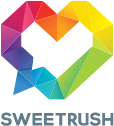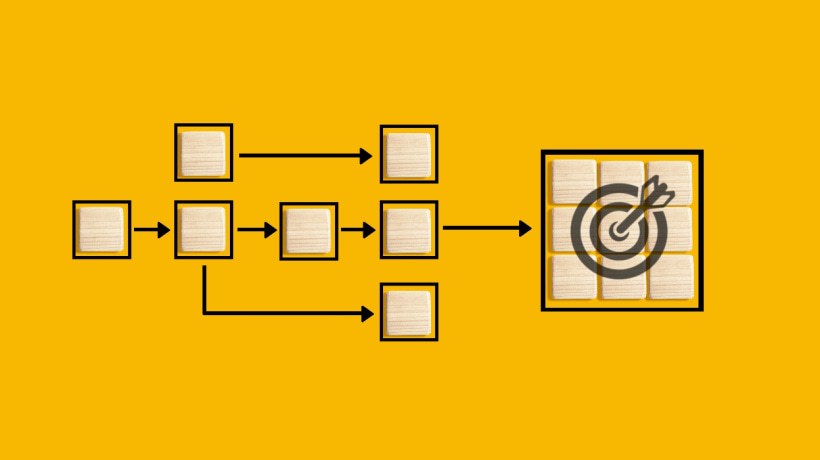The Current State Of Employee Engagement
What a couple of years we've had! Just when we thought things were getting back to normal after a global pandemic—and all that did to shake business up—generative AI appeared, and everything changed again. The sages of old have said that the only constant is change but, to me, it feels not only constant but more unpredictable every day.
Meanwhile, our people are feeling the strain—and no wonder, when only 11% are prepared to "excel in uncertain environments while maximizing emerging opportunities." [1] And with two-fifths of employees' existing skill sets on track to be transformed or outdated over the next five years, they're facing enormous pressure to remain current. [2]
They're bringing that strain and pressure to work, and it's showing up as a record low in employee engagement: an abysmal 21%. The damage adds up: Gallup estimates the collective cost of employee disengagement to the global economy at an eye-watering $438 billion. [3]
As L&D leaders, we've entered a whole new era of flux and uncertainty, but also opportunity. How can we help our people grow into adaptable, innovative, and resilient employees…who stick around?
Good news: Research shows that if our workplace prioritizes continuous learning and if we build and maintain a learning culture in our organization, we're on the path to success. [4]
Here are a few strategies to do just that.
Boosting Employee Engagement: Build A Learning Culture From Top To Bottom
When an organization prioritizes continuous learning, it sends a powerful message to its team members: We are investing in you and your future.
Providing professional development opportunities is a top employee retention strategy, with the investment also strongly linked to enhanced employee engagement and better performance. [4]
However, a true learning culture requires a fundamental shift in perspective. Instead of focusing on what leadership or management wants employees to know, the emphasis must instead be on what learners actually want and need to know to perform their jobs effectively. In short, it requires a shift from telling to helping.
To create a learning culture to thrive from the top down, leaders must be public about their own learning journeys. When employees see executives and managers actively participating in professional development, it signals that learning is a core value of the organization.
Furthermore, creating clear connections between learning pathways and opportunities for promotion reinforces the message that growth and development are integral to career advancement. This approach ensures that the entire organization, from new hires to the C-suite, is engaged in a cycle of continuous improvement.
Think Outside The Module: Employee Engagement Through Flow-Of-Work Learning
A culture of learning doesn't require expensive platforms or flashy features; it's about empathetic design that respects the employee as a learner. It's also about recognizing that learning isn't confined to a formal training module but integrated into the daily flow of work.
Here are a few ways for L&D leaders to think outside the module:
- Experiential learning and stretch assignments – Provide opportunities for employees to apply new skills in real-world scenarios or take on "stretch" assignments that push them beyond their current capabilities. Also, think about how employees can create job aids or other tools that will help their teammates benefit from what they have learned from the assignments.
- Mentoring and coaching – Establish formal or informal mentoring and coaching programs where employees can learn from the experience and wisdom of their colleagues. Don't be afraid to let them self-manage their engagements.
- Think small for big impact – Encourage employees to develop a specialty or niche area of expertise that connects to their work, then encourage them to build their personal brand by doing things like presenting at "lunch and learn" opportunities or writing blog posts. Look for opportunities for them to act like an internal Subject Matter Expert.
- Reflection and sharing – Helping your employees move from passively experiencing something new to integrating new information and skills requires one thing: reflection. Give your learners space and time to reflect upon and share what they are learning. If your organization is one where an employee can safely share both their struggles and successes, congratulations! That psychological safety is a clear indicator that you have a learning culture.
Ask, Don't Assume: Engaging Employees Via "Stay" And Empathy Interviews
Generally, employees want to do a good job at work. They want to feel engaged by their managers and teams, perform productively and efficiently, and maybe even grow into more senior roles. And they, better than anyone, know what roadblocks and challenges they encounter. The easiest way to understand their pain points is to simply (wait for it!) ask them.
Borrowing a strategy from design thinking and conducting empathy interviews is one of the best ways to learn these pain points. These open-ended conversations involve asking a question—and then listening.
These conversations should be a routine part of our employee engagement toolkit, and are a vital part of both the L&D and talent management functions.
The L&D Perspective
Before designing a new learning program, your team should be asking members of the target learner audience what they already know, what they struggle with, and how confident they feel approaching different work-related decisions, tasks, and conversations.
How many learners should you interview? You might be surprised. If you can talk to two or three who represent each segment of your learning population, you'll probably learn a great deal of what you need to know. You'll definitely know more than you would if you started by making assumptions about their needs.
The Talent Management Perspective
Well beyond their first 90 days, managers should begin conducting regular "stay interviews" with employees to understand what they value, what keeps them engaged (or not so engaged), and any potential concerns they face in their roles. These regular conversations are a wonderful moment to align the business need with the employee's desires for their own future success. Seeing current work assignments as a valuable step to their own hopes and dreams absolutely turns the dial on engagement.
And these conversations will naturally uncover the learning programs employees want most—AI training is a major need at many organizations—and how to connect employees' interest with internal skill needs.
They'll also uncover any frustrations. If folks are feeling stalled by antiquated processes or systems, or valued by their teammates, these interviews will help their managers address concerns long before they disengage and ultimately leave the organization.
Listening to, then acting upon, employees' needs sends them the powerful message that they're seen, heard, and valued. Employees who join us in improving our processes, culture, and professional development are employees who are active, engaged, and committed.
TL;DR: Don't save these conversations for the exit interview.
Engaging Employees As Adults, Or Handing Over Control
Another strategy to foster a culture of learning is to remember your audience. They're adult professionals and, as such, they want to exercise some measure of control over their lives and learning.
As you develop learning programs that address in-demand skills, ask yourself:
- Could we design this learning or skilling journey in a way that allows learners to choose their entry point? The order in which they consume the content?
- Could we empower learners to test out of certain sections they already know?
- How might we offer learners the right amount of structure and freedom? For example, what if we suggested themed learning or skilling paths to give learners some guidance, but left them the freedom to choose their areas of focus?
Here are some questions I often hear from well-meaning clients: "What harm is there in requiring people to cover content even if they've already mastered it? Won't it be a good refresher?"
The answer? A resounding "No!"
Requiring experienced learners to rehash content they've already mastered actually has the paradoxical effect of making the content harder for them. This phenomenon is called the expertise reversal effect. If someone already knows the content, let them test it out. Don't waste their time.
Employees don't join our organizations as blank slates. Acknowledging the skills and experience they already bring to the table demonstrates our respect for them as professionals, people, and partners in meeting the future of work.
Make It Transformative: Maintaining A Culture Of Learning For The Long Term
In a true culture of learning, a learning or skilling journey is not a one-and-done event. Its business value lies in how it transforms the employee's performance, behavior, and ultimately, results. And its value to the employee lies in its relevance to their daily work, roles, and WIIFMs (that is, "What's in it for me?").
Here are a couple of ways to sustain your learning programs and enhance their value:
• Create a community of practice. Offer a place where program alumni can come together with peers to share knowledge, ask for support, and exchange resources.
The wrong way to do this: the dreaded college-style chat thread.
The right way: Place the chat thread somewhere employees already go, like a dedicated Slack channel. And don't assign them topics to write about. They want to share what they know from their own experience and ask questions about real challenges they're experiencing (See "Engaging Employees as Adults," above.)
• Have learners create their own artifacts. As a capstone activity, have employees apply their new skills to create a practical tool, process, or workflow they can use back on the job.
One of the most interesting projects I've witnessed is one where learners worked in teams to create a job aid to be shared with the next cohort. The learners loved creating something for their colleagues, and the rising cohort of employees appreciated getting this resource at the beginning of their learning journey. Not only was it helpful to their learning, it helped them feel connected to a larger community of practice.
Long-Term Employee Engagement In A World Of Flux
We began with a look at the unique historical moment we're sharing: a time of constant business, economic, political, social, and technical change. Meanwhile, our organizations and work demand more resilience, adaptability, and agility from us than ever.
As L&D leaders, we're perfectly positioned to build a learning culture that aligns with our organization's talent needs and our people's aspirations. By doing so, we invite employees to partner in our organizations' growth and future-readiness, while also boosting their engagement, commitment, and connection.
The SweetRush team has been co-creating training that promotes employee engagement and achieves tangible results since 2001. Reach out to share your vision for building a workforce that's resilient, engaged, and committed for the long haul.
References:
[1] Future-ready workforces are not found, they're made by investing in people
[2] Future of Jobs Report 2025
[3] State of the Global Workplace









